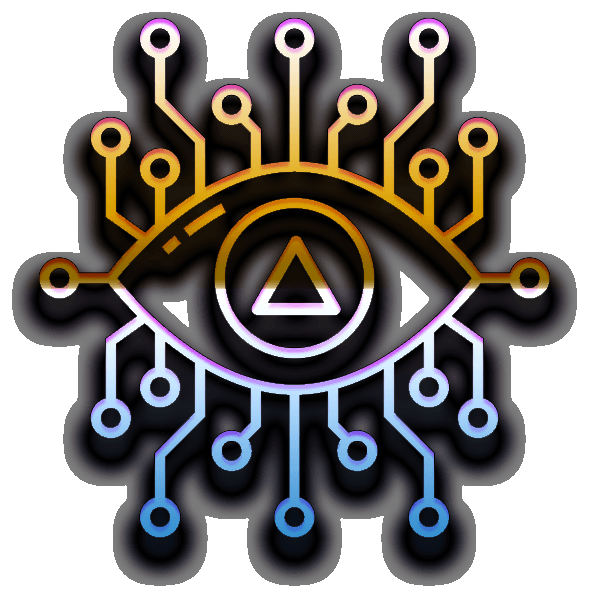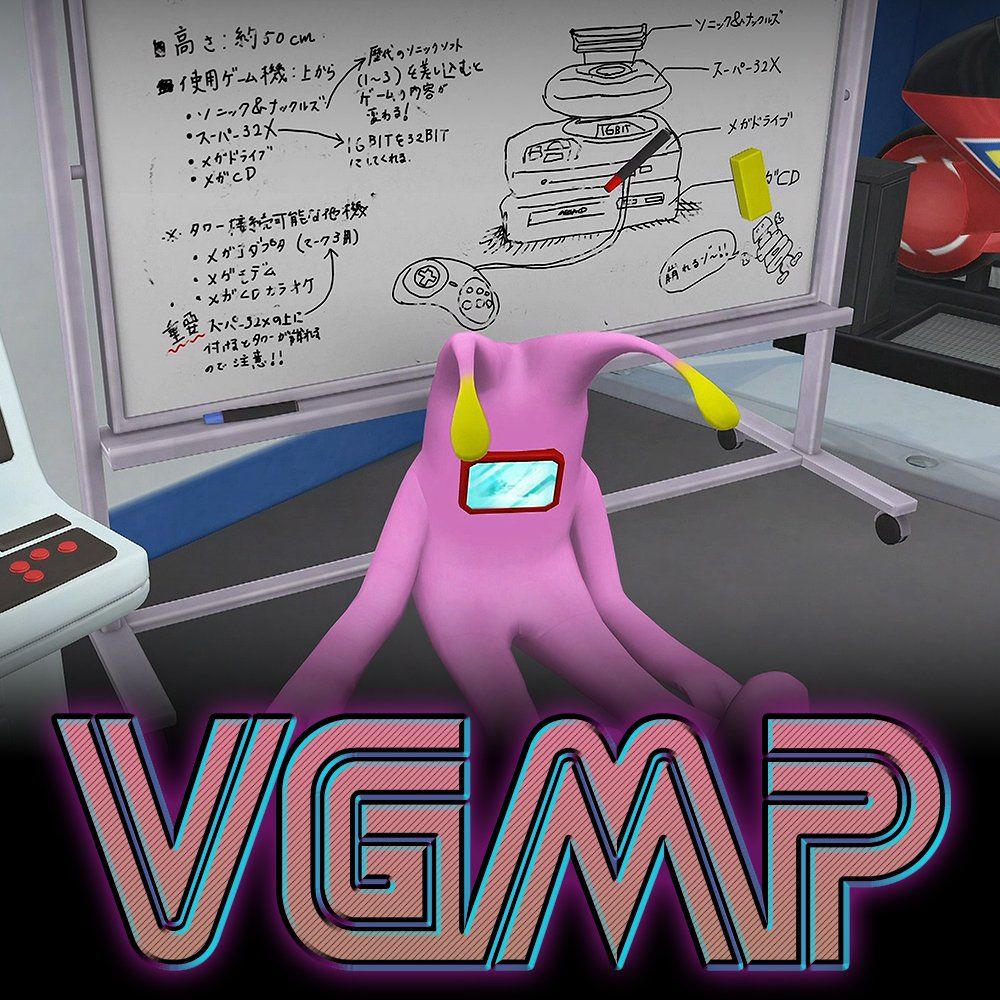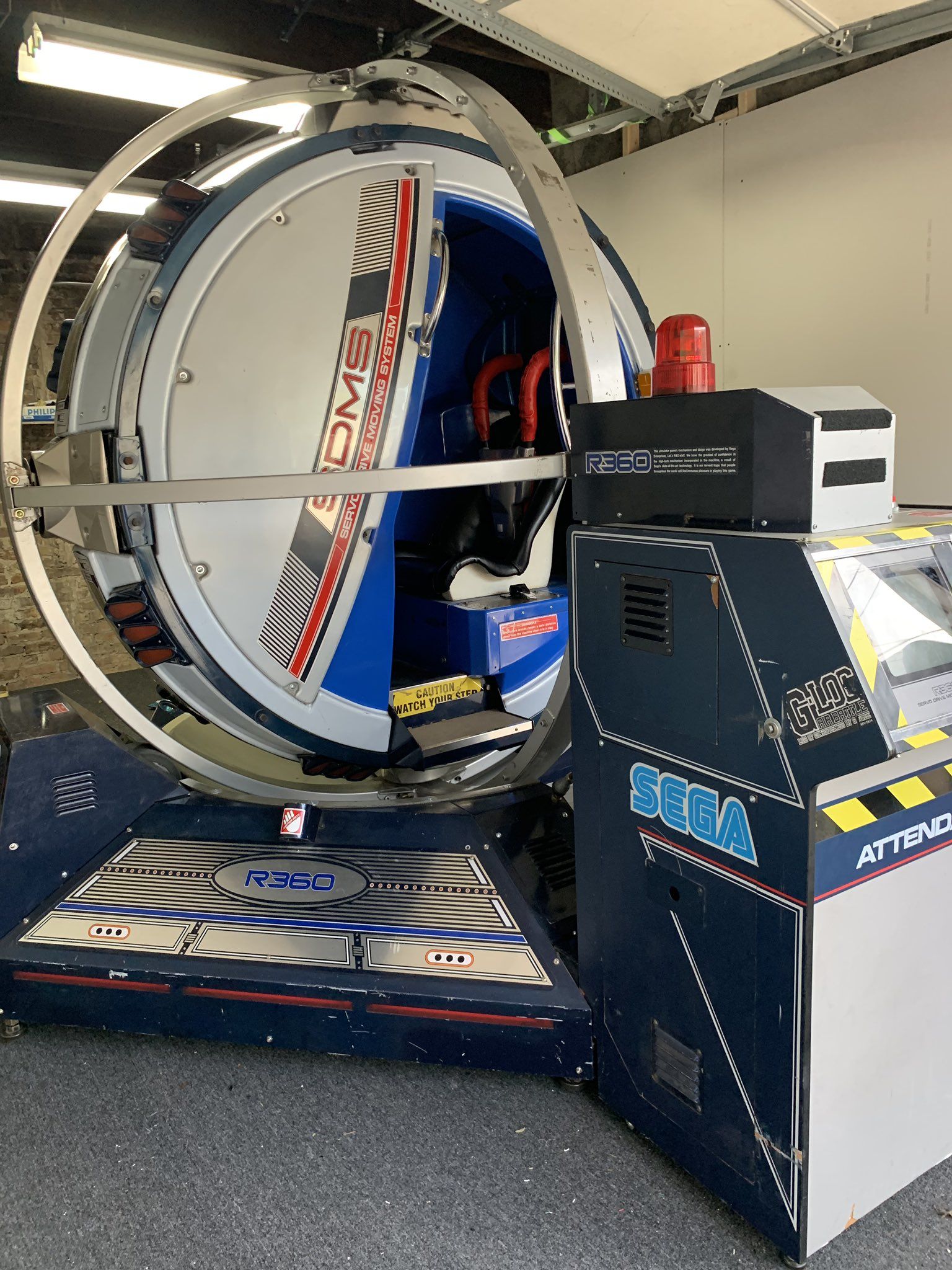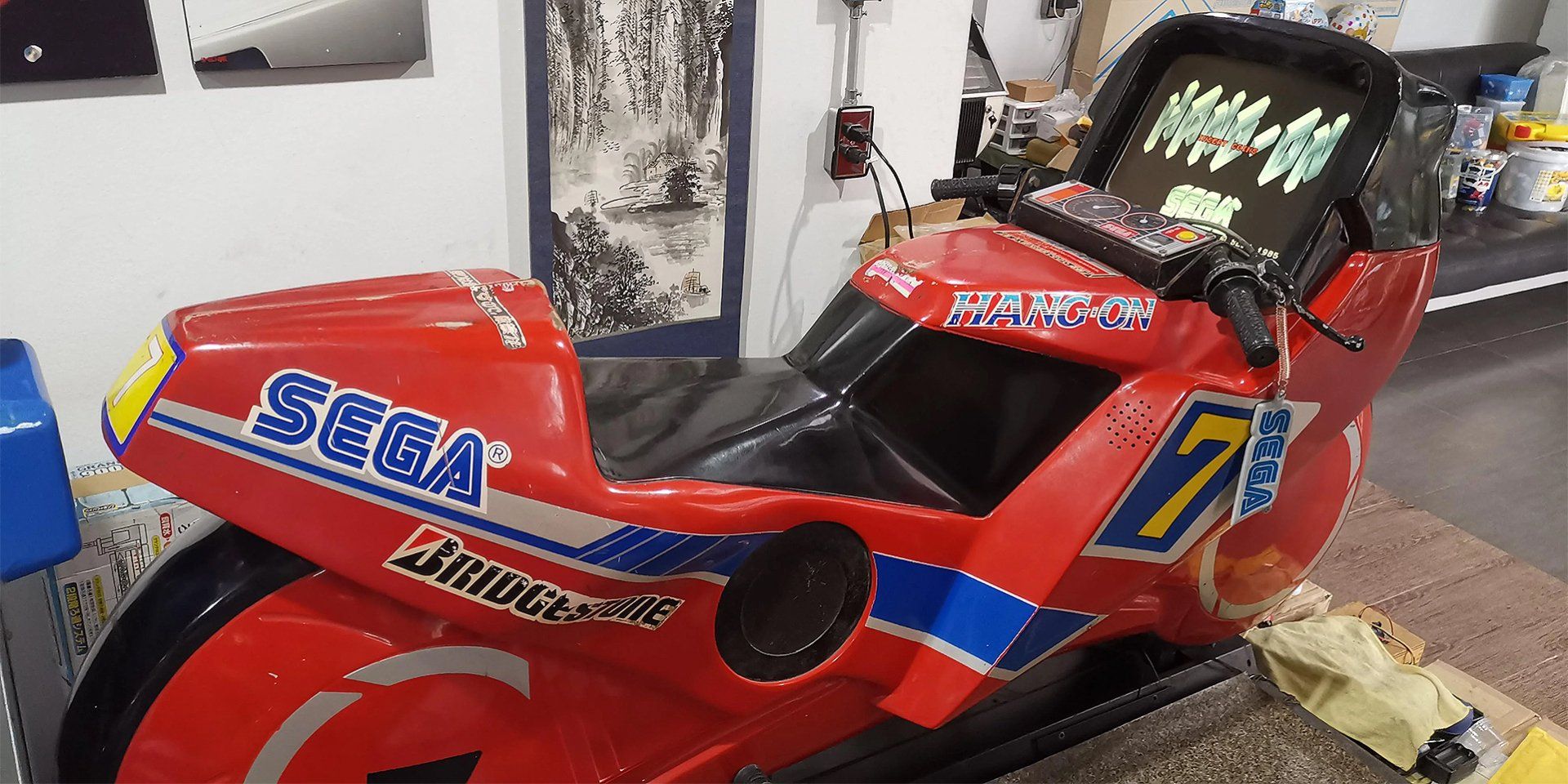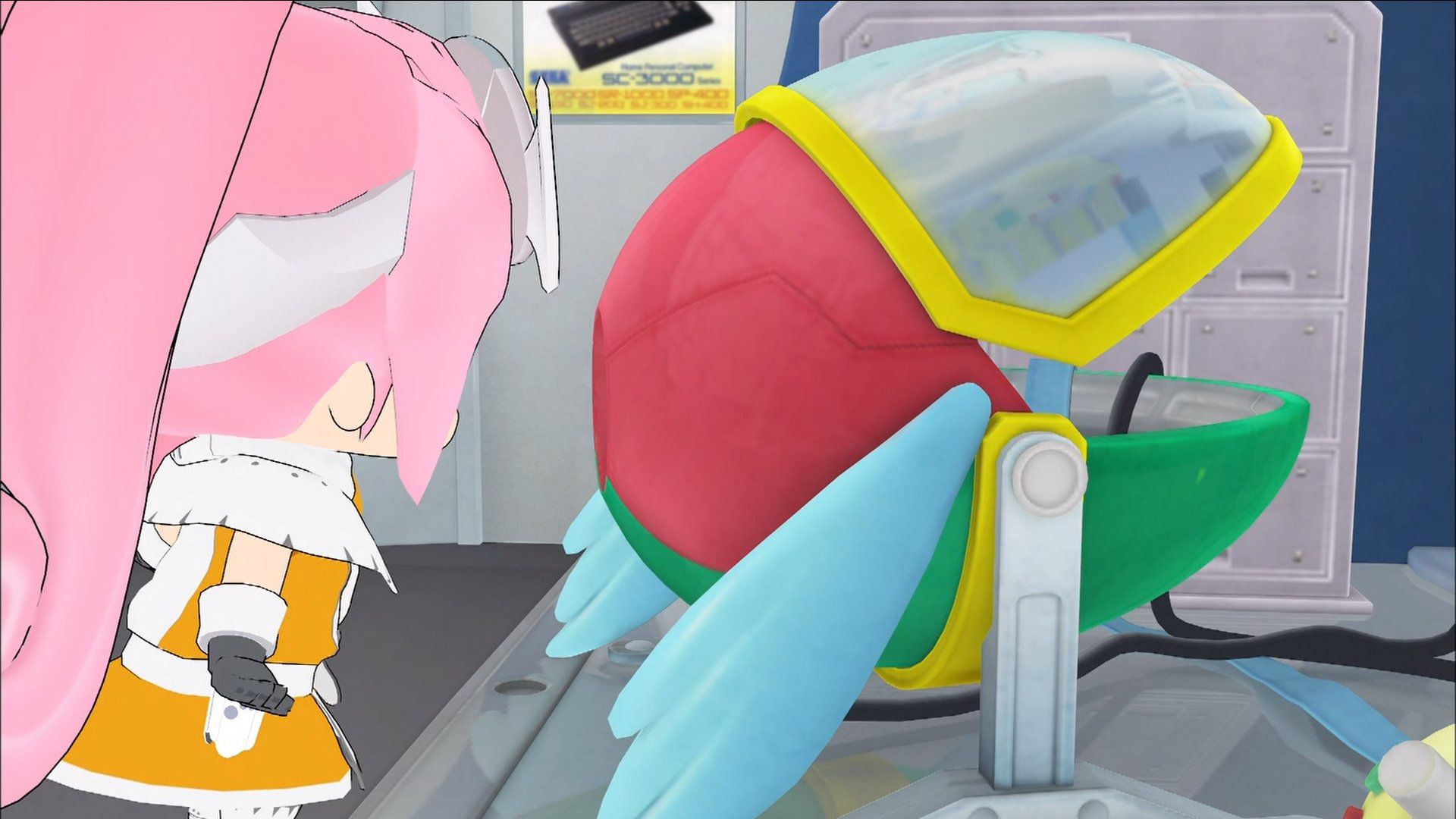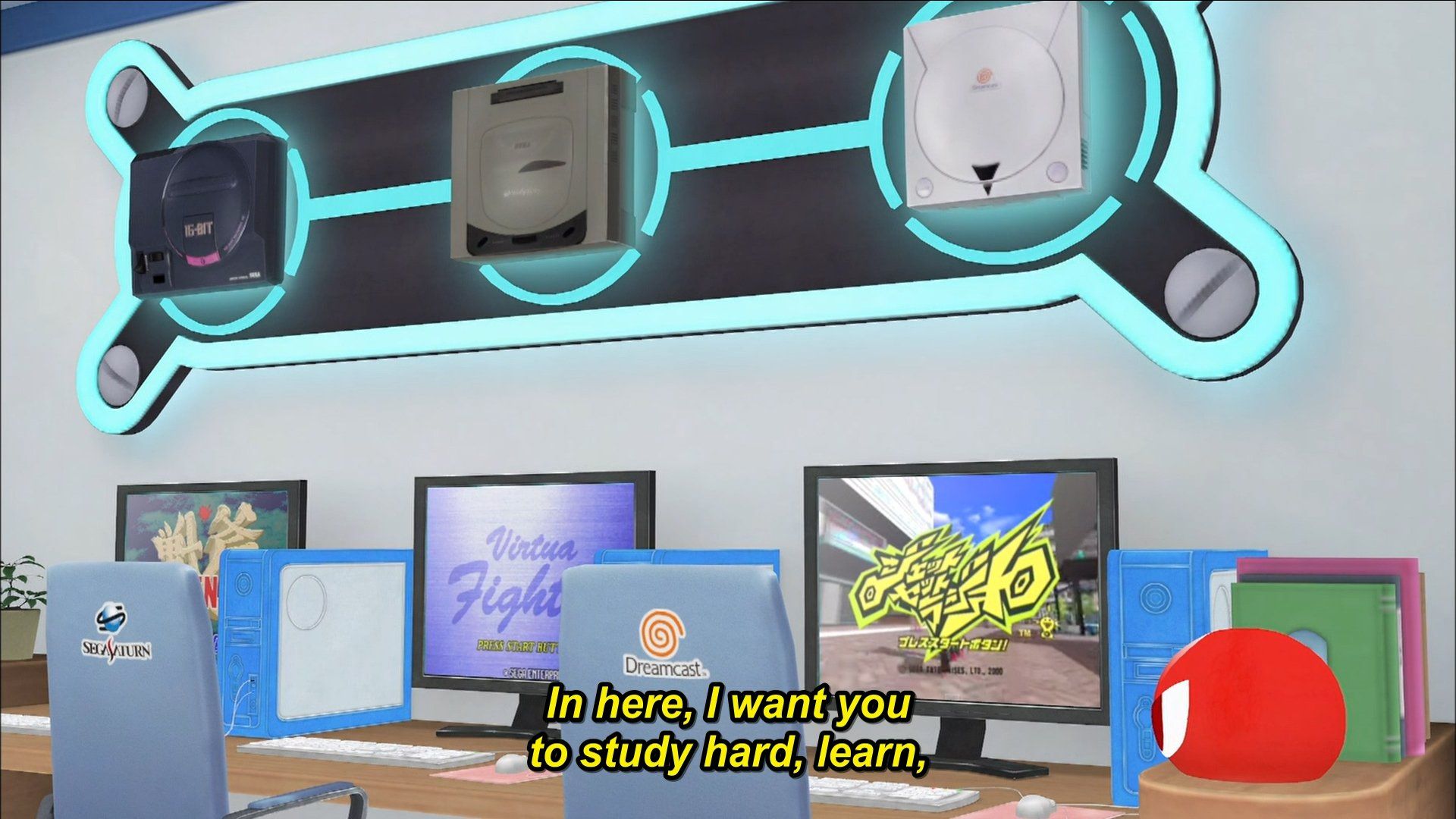[VGMP] Sega Hard Girls 3 - Class Room References
Rory Joscelyne • 1 March 2022
VGMP: What are all the items in the Academy's Classroom?

How, how, how high does your high score go?
Sega Hard Girls' classroom is an incredible vault of Sega references, from the obvious to the very niche. This is further expanded when you realise the room not only changes over time, but also that the whiteboard contains unique drawings and references every episode. But before we get too ahead of ourselves, let's have a look at the general room layout.
PART 1
- Character References
PART 2
- Atrium References
PART 3
- Classroom References
PART 4
- Episodes 1 to 4
PART 5
- Episodes 5 to 8
PART 6
- Episodes 9 to 11
PART 7
- Episodes 12 and 13
PART 8
- Episode 14/The OVA Movie

Already, from this one angle, you can already find a wealth of references. Let's start from the foreground-left and go clockwise.
There are arcade machines in most of the corners of this room. The most obvious are the Astro City arcade cabinets nearest the camera - these were Sega built multi-purpose arcade cabinets that housed a lot of arcade games that didn't require specialised hardware. The one closest to the camera permanently displays the SEGA logo that you see when booting up a Mega Drive title. The one furthest into the room has a piece of paper on the screen saying "Out of Order". You'll get to see these in more detail when I show you the reverse shot.
Next is the whiteboard. I'm going to give this whiteboard its own section, as each episode includes different artwork drawn on it. Here (Episode 1) you can just about make out the House of the Dead 2 zombies, but you'll get a clearer view of this on the appropriate close up.
In the top-left corner are two other arcade machines. The R360 arcade cabinet (Which was only used on G-LOC: Air Battle, Rad Mobile and Wing War) is suspended near the ceiling. Underneath it is the Hang On ride-on arcade cabinet. There are high resolution photos of the real cabinets below.
Hidden behind the door in this image is a poster - that is detailed below as it changes mid-season.
In the top-right corner we have a camera with speakers hanging from the ceiling and below it is an OpaOpa machine facing a monitor displaying Fantasy Zone. This "arcade" setup is purely fictional, which is obvious by it's overly small size and trailing tubing.
On the right wall you can find a Mega Drive, Saturn and Dreamcast mounted to a glowing panel. Below are three monitors displaying a game from each (These change mid-way through the season). At the beginning they show
Golden Axe (Mega Drive),
Virtua Fighter (Saturn),
Jet Set Radio (Dreamcast). The chairs are also branded by console, and you can just make out a red Puyo at the end of the desk.

The other end of the room houses the big widescreen TV the girls use to travel into each game world. Underneath the TV are small versions of each console with floor standing speakers each side.
The Dreamcast has nothing plugged into it. The Sega Saturn is connected to the Twin Stick controller, while the Mega Drive has a standard 3 button controller connected. Beside these is a large weight with 16t written on it in yellow - and believe it or not this is an actual game reference.
16t was a Mega Drive title that was only ever available in Japan, and only via online download services. In Japan, there were a few specialised modems released for the Mega Drive, one of which being the Sega Game Toshokan - this is where 16t could be found initially.
Years later, the Dreamcast would revive the title (but again, only in Japan). Dream Passport Premier was a web browser disc with a built in Mega Drive emulator (Called Dream Library) that could download rented titles from the internet. 16t was a free to play download release on Dream Library, primarily used as a way to test your connection strength.
As this is a screenshot from a later episode, this is the room in it's second configuration. Not much changes, however we have a pink Morolian plushie sat in front of the whiteboard, and the games on the consoles to the left have changed. They are now;
Alex Kidd for the Mega Drive,
Dynamite Deka on the Saturn (Known as Die Hard Arcade internationally) and
Roommania #203 for the Dreamcast.
Nothing else changes in this configuration other than the poster behind the door.


The posters behind the door are hard to spot. Having gone through the series, these are the clearest, and closest, screenshots I could get.
The first is an advertisement for the Sega SC-3000 on a desk filled with other items - most frighteningly two pistols haphazardly tied to a wire wall - lucky this didn't come out in the mid-90s when Congress was desperate to connect gaming and violence. The second is an advertisement for Quartet (known as Double Target in Japan) on the SG-1000 (with the Mark II shown on the poster).
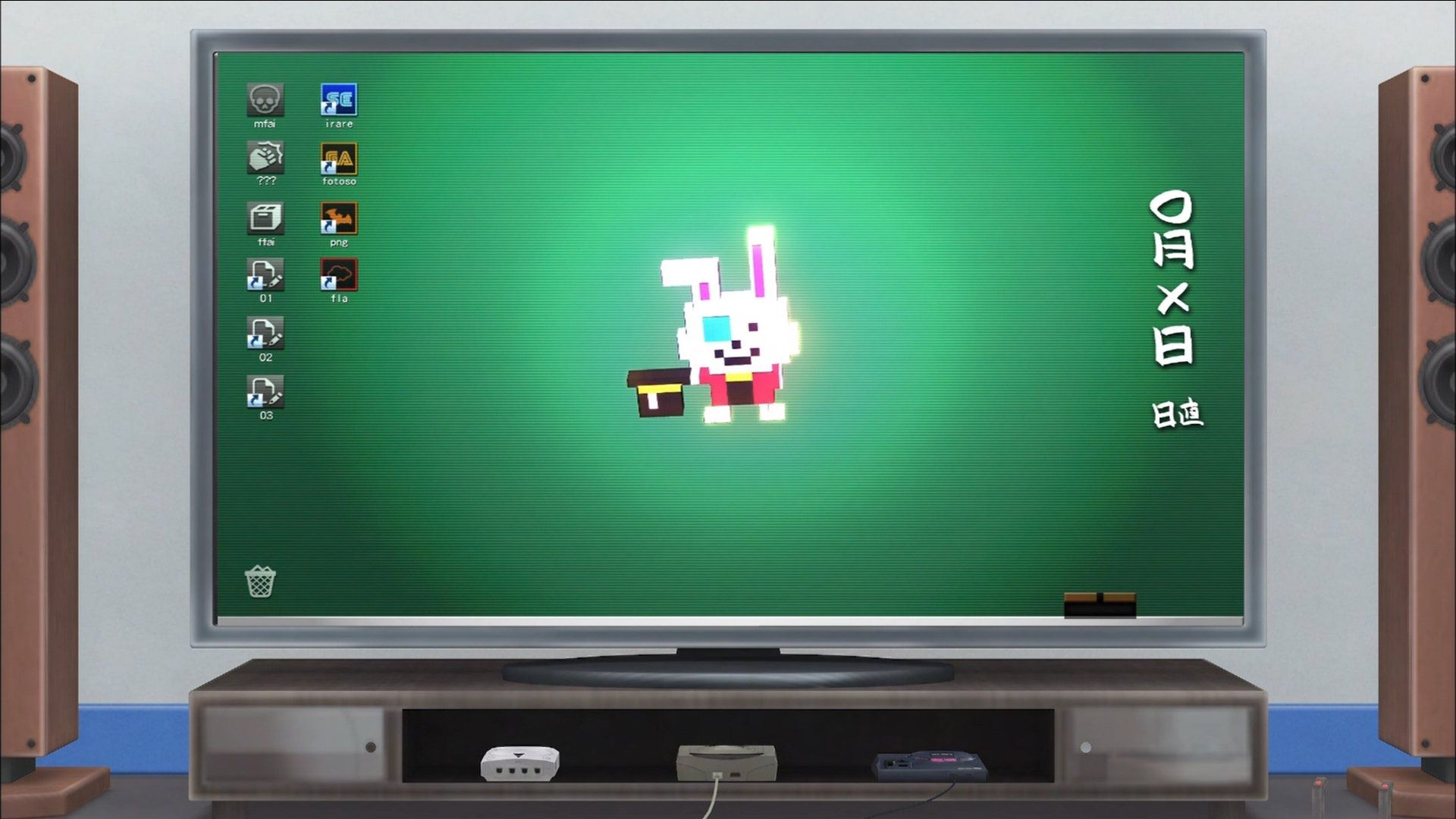
When Center-Sensei speaks, he usually appears on the PC style desktop on the big TV (though he does infrequently appear in other ways). There's not really anything of interest here, but adding this for completion's sake.
The filenames are largely gibberish and sometimes use file extensions as the filename instead;
png
is an image file.
fla
is a Macromedia Flash file, commonly used on Dreamcast browsers.
fotoso
sounds like a Japanese play on Photoshop.
irare is perhaps a play on iTunes or Adobe Illustrator.
mfai
and ffai file names don't seem to mean anything, if you can think of a reference then let us know.
Finally the Japanese text on the right side of the screen - I was unable to translate it. Google Translate seemed to think it was a mathematical sum, but the mixture of Kanji with the sum threw off any cohesive answer.

The final item of note is the white board. This is often altered in every single episode, with unique artworks in epsiodes 1, 3, 6, 8, 9, 10,11, 12 and 14 (the special). Episodes 2 and 4 both give tiny glimpses of the whiteboard, but after comparing them with the other screenshots it turns out they both use the Episode 12 white board artwork.
The screenshot above shows the references from the first episode. Currently I don't have a translation for the text on the left hand side, but I can explain the visual references.
House of the Dead 2: The three zombies in the centre are the three main zombies from House of the Dead 2, given away by the appearance of the axe throwing zombie from that game.
Alex Kidd in Miracle World:
First of all, there's a doodle of Alex Kidd in the bottom right corner of the white board, just his head and hand (with the attacking visual effect). There is also a poster for Alex Kidd in Miracle World twinned with Ashura (Known as Secret Commando in Europe and Rambo: First Blood Part II in America). However I couldn't find the variant actually used in the show. The version I found seems to use the same layout, but things have been shifted and the images shrunk to make way for screenshots and descriptions. I'm not sure where the version in the show comes from, if you know where I could get a higher resolution copy of that version please let me know.
Get Bass / Sega Bass Fishing: A fishing arcade game by Sega, Get Bass also saw a port to the Dreamcast with it's own unique fishing rod controller. The fishing rod controller was a motion-controller that was assigned to the Dreamcast's second control stick function (never utilised in the official pad). By tilting the rod back and then throwing it forward, the DC would read this as you throwing the line out into the water. This controller even saw use with Soul Calibur as you could use it as a motion-controlled sword!

In Episode 3, the white board is only seen in two close-ups on Mega Drive - only giving us small pieces of what is on there. Sadly, we never get an overview of it. However the pieces on there include what appears to be an eyeball driving a golf cart telling you to limit your gaming to 5 hours a day. Mega Drive is drawn in chibi form next to this, with a shocked expression on her face.
In the second appearance of the board, we see a really very impressive artwork of a man playing inside of the R360 cabinet mentioned earlier in this article. I can't tell if he's supposed to represent anyone in particular, however due to his bandana and shades it's possible he's based off of one of the pirates from Dynamite Deka 2 (known as Dynamite Cop in the West) on the Dreamcast.

Episode 6 has a series of cheat codes written down the left side, with a drawing of a boy with screws in his head crying. If anyone can translate the text around the boy's artwork I'll update the article with it.
The cheat codes are for Sonic the Hedgehog on the Mega Drive (Japanese edition only), and they do the following;
HEAVY CHANGE!!
Up, Down, Down, Down, Left, Right, A+Start
Up, C, Down, C, Down, C, Down, C, Left, C, Right, A+Start
C x6, Up, Down, Down, Down, Left, Right
C x6, Up, Down, Down, Left, Right
SOUND
->
reset
A+Start - 9E:
Staff Roll
9F:
Ending
Code 1 on the Title Screen activates the Zone Select
Code 2 on the Title Screen activates Debug Mode
Code 3 (made up of the third and fourth line) work in two places. On the Title Screen they activate both Zone Select and Debug Mode together. Inside the Zone Select is a Sound Select. Input Code 3 into the Zone Select screen then add the following inputs;
Sound 9E, Press A or B or C to go straight to the Staff Roll/Credits screen
Sound 9F, Press A or B or C to go straight to the Ending Sequence followed by the Staff Roll/Credits screens
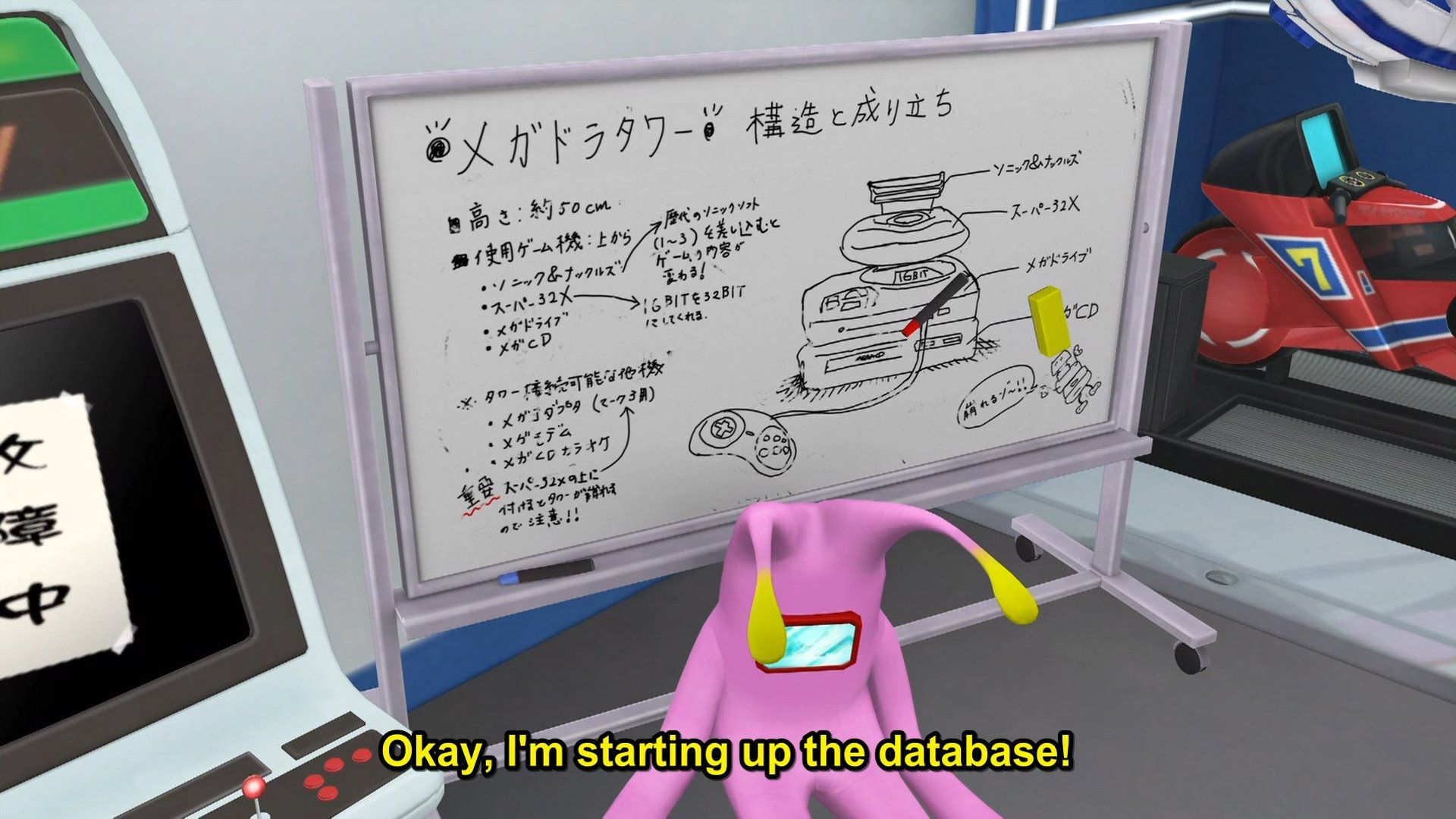
Episode 8 has the Tower of Power - A Mega Drive Mk1, atop a Mega CD Mk1, with a 32X mushrooming out of the top and finished with a Sonic & Knuckles cartridge (I was able to translate that part).
To the right appear to be technical specs of the units together, though translation would be needed for this.
Underneath the Tower of Power is a chibi version of the tower. Google Translate suggests he's saying "This month, it's nine!!"
Any more accurate translations would be greatly appreciated and I can update the article.

Episode 9 was only partially visible in 3 different spots (one showed the left, one showed the middle and one showed the right), so I managed to photoshop the three elements into one complete picture.
The left hand side has some kind of list, if you can help with translating this then I can update the article with what it says.
The middle of the picture shows Bruno Delinger from the title screen image of Dynamite Deka (known as Die Hard Arcade internationally).
The right side of the picture shows a man with a hammer? And it also shows a spaceman, however that was the clearest shot I could get and he's missing his head.

Episode 10 shows us Shinobi (either Joe Musashi or his son Hayate Musashi, depending on region) and his dog Yamato from the game Shadow Dancer: The Secret of Shinobi.
There's a list on the left hand side with 5 bullet points.
On the right we have a chibified woman saying something about the USA. I tried to translate it but it came out as "Be Dry USA", which I doubt is correct.
Help with translating these would be much appreciated, we'll update the article and give you credit.

Episode 11 shows us this strange wrestling match, with a robot whose head looks like OpaOpa from Fantasy Zone. I don't recognise the characters, and couldn't find any reference for the robot character. He appears to have a Sega Saturn on his back, a Mega Drive controller on his wrist, and an SG-1000 controller on his thigh.
I attempted to translate this, but I'm not very confident in the accuracy of the translation. Any help would be greatly appreciated.
The title translated to "In the Takashi Room".
The other line translated to "Real face prohibited!!"

Episode 12 shows is the last storyline appearance of the white board (though this version does slightly appear in episodes 2 and 4). This shows the shree main Sega Hard Girls in the following order: Saturn, Mega Drive and Dreamcast.
Help with translating this image would be much appreciated too.
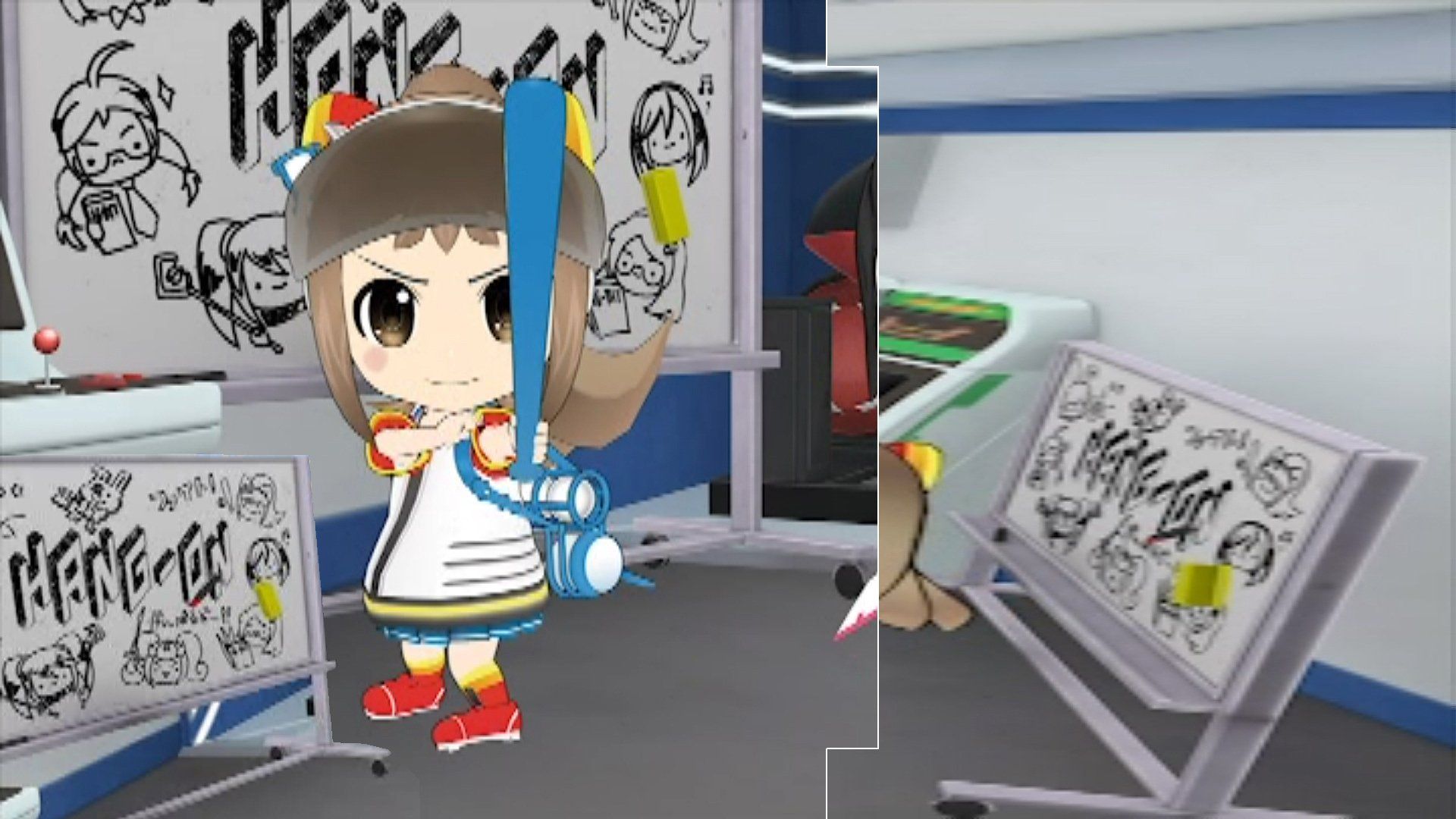
Episode 14 (The Hang On special) was only ever released on DVD and not Blu-Ray, as such these images are lower resolution and pixelated. However you can see the white board was uniquely decorated for this appearance with chibi heads of all the girls.
From top left, going clockwise;
SG-1000 Mark III, Center Sensei, Robo Pitcher, Master System, Mega Drive, Dreamcast, Saturn, Mega Drive II.
There are some quotes written next to characters, however due to resolution they are very hard to make out. Any help translating would be great, but I'm not expecting it to be very possible in this episode due to the pixelation.
Thank you for reading this article, I hope it was another great look into the references of Sega Hard Girls. Our next article will be the start of our Episodic breakdowns (references within episodes of the show). However to close off the article, I've left a gallery of other (sometimes closer) images of various parts of the classroom for you to peruse, click on each one to open up the full image.
Please check back regularly for updates, and do follow our podcast including our episode on Sega Hard Girls at www.vgmovie.co.uk.

Blue Streak, speeds by... Sonic the Hedgehog (2020) is Hollywood's first big blockbuster attempt to bring Sonic to the big screen. A much more popular effort than the 1996 anime movie, this one sees Sonic come into the "real world", but that doesn't mean that it isn't jam-packed full of Easter Eggs. And some of them are references to other Sega franchises.

First things first - DO NOT WATCH THIS MOVIE. Kung-Fu Master may have the licence for the game, and it may include a few scenes at Arcades, but the story is nothing to do with gaming - and the story it represents is a literal crime. A vile, vile crime. With that out of the way, there are some interesting arcade machines visible throughout this film - all of which are here. So you have been saved from having to watch this vile garbage - and saving you the criminal act of watching it.

Also known as Sonic the Movie, the Japanese OVA was actually a run at a possible series that never materialised, instead leaving us with two episodes hastily stitched into a "feature". And boy, did they push taste and decency for some of this. Other than Robotnik chasing underage skirt, it's largely inoffensive. But unfortunately that story angle wound up kick-starting a long running VGMP joke of Sonic adaptations having to reference breast milk (which the 2020 Sonic movie also references).

I love The Wizard. It's so bad. The first major disagreement between Rory and Jamie in VGMP, Rory fully recommended The Wizard as a movie, whereas Jamie fully rejected it. It's not hard to see why this movie caused such a rift of opinion - it genuinely tries to be a deeper and emotional story, but it's still a Nintendo marketing product (and an out of date one, at that). One thing The Wizard does have, is a lot of videogame references.

The House of the Dead movie brings together two major events in film. It's the first foray by Uwe Boll into video game adaptations - the start of a terrible career. And it was the last ever movie to use the turn-table technique for 360 degree shots, as it was too dangerous to keep using - much like allowing Uwe Boll to have a film career. This film doesn't have many proper references, instead lazily throwing in random micro-shorts from the first three House of the Dead games (in no particular order, for some reason).
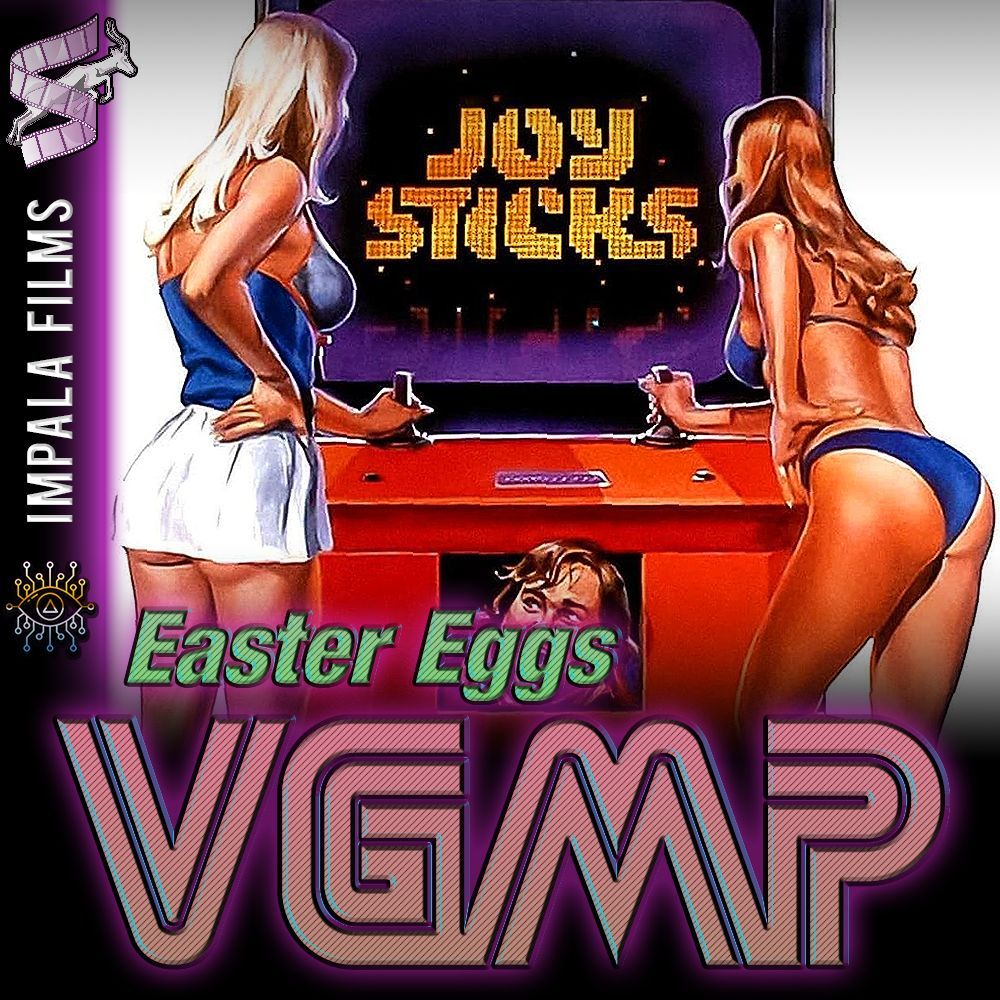
The first appearance of Jon Gries in a video game culture movie, and he would return in Noobz (2012) to steal yet another movie. Joysticks is an awful comedy movie, attempting to cash in on cheap teen humour of the time with a big dose of objectifying women. But to it's credit, it does showcase a lot of great arcade cabinets from 1983, and all in fantastic condition too! These screengrabs are ripped from the limited-run Blu-Ray release of the movie, which represents the best this film has ever looked. However this was a relatively low budget feature of it's time, so don't expect prestine visuals.

Tron is an undisputed 1982 classic that had a major impact on 80's culture and gaming aesthetics as a whole. And yet, when we reviewed it, it turns out the movie itself is a big bag of style over substance. The main videogame the movie revolves around is Space Paranoids, and it is not a real game. Several videogames were later made of Tron, but none of those appear in this movie.

Gamebox 1.0 is an odd 2004 movie starring the guy who played Harvey in Sabrina the Teenage Witch. You could technically call it a dramatic horror, if any of it was dramatic or a horror. As you can see from the shot above, the details were so vital to this film that there's a guy at "work" just staring at a blank screen. Regardless of the low budget nature of the film, there are still a surprising number of references hidden in this movie.
